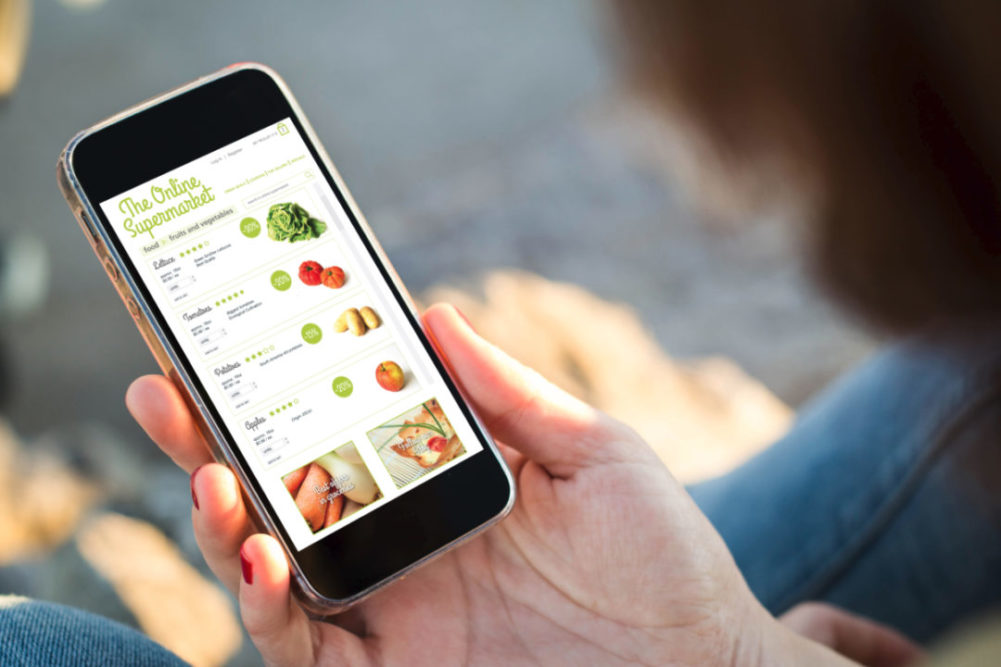NEW YORK — Online grocery was the big winner during the COVID-19 pandemic, but summer may bring a temporary halt to the channel’s impressive growth trajectory, according to a new report from Rabobank.
The report examined credit and debit card transactions to see how the pandemic impacted food retailer categories in both brick-and-mortar and online environments. It found online growth was fueled by a jump in order frequency, with consumers averaging 3.87 orders per month in the second quarter of 2020, compared to 2.88 in the previous quarter. That number has remained around 3.5 orders per month throughout the pandemic.
Online growth was not the result of increased order value, with average transaction size dropping in the peak hoarding months of March and April 2020, driven by the effect of stockouts and an increased focus on lower-value basic items, according to Rabobank.
Brick-and-mortar retailers were the preferred place for consumers in the initial pantry-stocking period. Discount grocers and supermarkets captured most of the initial stocking, respectively posting 84% and 79% year-over-year growth in the week ending March 18, 2020. Despite a 54% surge during the same period, premium and natural grocers failed to sustain the momentum and dropped to negative ground for the remainder of the year.
After a slow start, online grocery expanded at triple-digit growth rates throughout the pandemic. Online’s share of consumers’ wallet reached a peak of 17% in January 2021 before dropping to 15% this spring as vaccinations ramped up, warmer weather rolled in and the economy continued to reopen.
The summer could bring a retraction in online’s share, which could be seen as a temporary ceiling directly linked to COVID-19 cases dropping, said JP Frossard, consumer food analyst at Rabobank and author of the report. Data from previous quarters indicate some seasonality in online’s performance, with consumers tending to favor home delivery and pickup during winter months.
“A potential stagnation of online grocery’s growth shouldn’t be seen as worrisome, but as an opportunity to realign the strategy, put things in order and defend the market share just conquered,” Frossard said.
Introducing the online discounter
Discount grocery shoppers increased their presence on online grocery platforms the most. Customer overlap between online grocers and brick-and-mortar discount grocers was 24% in April 2021, compared to 11% and 16% in January 2019 and 2020, respectively. The overlap for premium and natural grocery shoppers was 22%, and the overlap for supermarket shoppers was 21%.
Discount grocer’s online presence was a key factor in making online shopping more affordable during the pandemic. More discount grocers started accepting food stamps, removing the debit or credit card requirements that previously deterred lower-income households from shopping online. Other retailer categories focused on reducing fees, with Walmart and regional chains like Kroger and H-E-B offering free delivery and pickup in most stores.
“Costs related to shipment and staff that add pressure to an already low-margin business are justified as an investment to enter the online game, or at least as an attempt not to be left behind by novel pure online players,” Frossard said.
A tale of two extremes
While the premium and natural segment increased its basket size in 2020 by 33% year-over-year, it wasn’t all roses for the category. The average number of transactions in the premium and natural segment dropped to 2.84 visits per month in April 2021 from an average of 3.21 in 2019. Frossard pointed to consumers favoring the convenience and affordability of larger, more diversified retailers during the pandemic as one potential explanation.
Improved offerings by traditional retailers also have reduced the exclusivity once associated with specialized retailers, he added.
“If product differentiation isn’t as hot for premium and natural stores as before, the numbers indicate they still appeal to a segment of shoppers that have stuck to their habitual shopping experience and sourced more products at their customary store,” Frossard said. “Following on that, expansion of offerings — from specialty products to a general portfolio — and a focus on an elevated shopping experience pose opportunities for premium and natural players to further expand baskets and increase visit frequency.”


